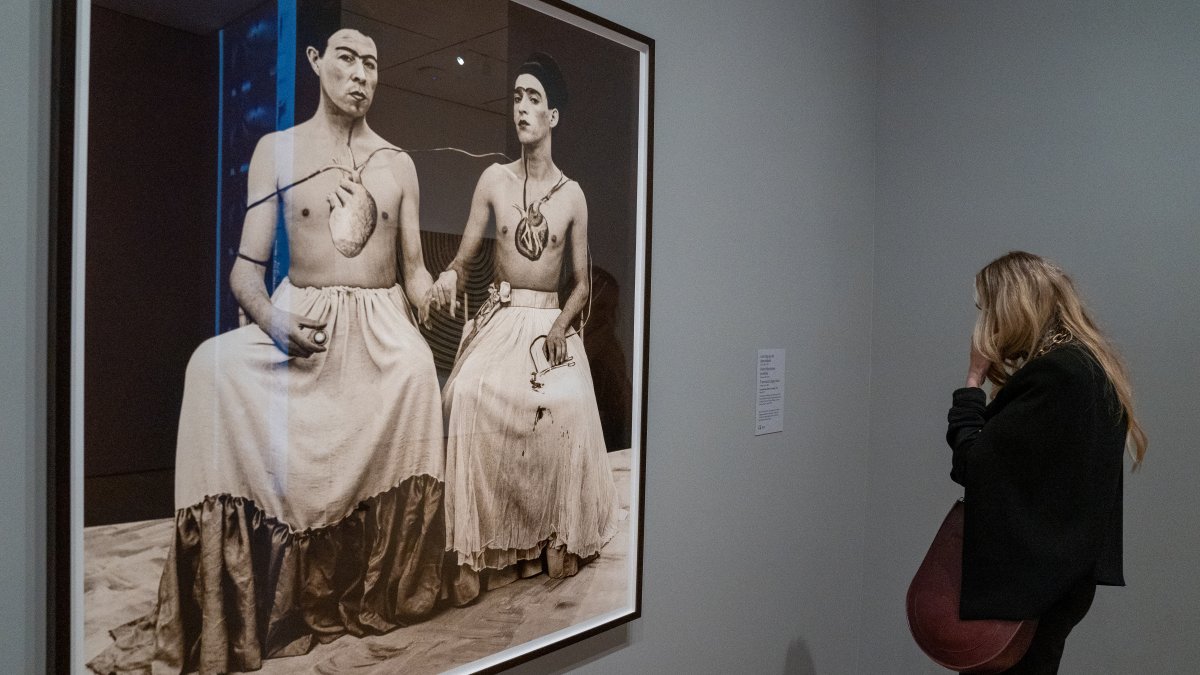NEW YORK — New York’s Museum of Modern Art (MoMA)’s April 30 exhibition of Latin American art, “Chosen Memories,” has history as a focal point for the work of 39 artists, whose works have been donated to the institution over the past 25 years by Venezuelan collector Patricia Phelps de Cisneros.
The exhibition, which will run until September 9, features 65 works, including videos, photographs, paintings, sculptures and video-installations, from MoMA’s extensive Latin American collection, to which Added to this are recent acquisitions, a fresco commissioned by the Brazilian Iran do Espirito Santo and certain loans.
The first exhibition of works donated by the Cisneros family took place in 2019 and included works made in South America between 1940 and 1970; “Chosen Memories” is a second exhibition “but, in this case, very different”, with works of contemporary art from the 1980s to the present day, said Argentine Inés Katzenstein, curator of Latin American art.
Katzenstein told EFE that this new selection is about how artists relate to history and the past, and is part of a “very detailed” study of works donated by the Cisneros family to MoMa in 2016.
This study “discovers that the question of retrospection is fundamental and in some of them it is intimate, and it has to do with emotional memories, family memories, with mourning, with ways of honoring the past in family terms,” said the also director of the Patricia Phelps de Cisneros Research Institute for the Study of Latin American Art at MoMA.
FEEDBACK
He added that, in other works, the relationship to history is broader: it is social, it is also political, as shown in the first part, “Returns”, in which the artists “surrender” in different places from the past to investigate history. . .
“This section is dedicated to the different ways in which Latin American artists have rethought the relationship with territory and history, trying in a way to offer liberating visions in terms of being able to produce their own representations of territory in relation to the long history of foreign representations”, he underlined during the visit to the exhibition.
In this section, a work by the Colombian José Alejandro Restrepo, pioneer of video art, stands out, which reconstructs the journey of the German explorer Alexander von Humboldt in 1801 through the northern part of the Andes.
A video sculpture with a pyramid of televisions of different sizes shows the artist’s ascent on foot through the mythical Paso del Quindío, known for its difficulty and strategic importance in the political history of the region, according to the exhibition .
“Restrepo decided to redo this path in 1992 and to represent it in his own way, from this kind of pyramid of monitors which shows this famous step”, commented the curator.
TRADITIONS AND RELATIONSHIP
The second part, “Reverberation”, deals with the way in which contemporary artists deal with secular traditions devalued by modernity and then recovered in their own way in their work.
“The artists decide to maintain, recover and strengthen (these traditions) in their work”, explains Katzenstein, citing the work of the Cuban José Bedia, with a career spanning four decades and who since the 1980s has been one of the most important figures in his country’s art and works on Afro-Cuban myths.
The third part of the exhibition is called “Kinship”. “Kinship is important as a way to connect through time and it is the most intimate and sentimental part of the exhibition,” says the curator.
“The kinship network appears as a form of intertemporal connection, and speaks of the construction of kinship as a form of connection with the past and, in a way, of healing”, he comments.
Uruguay, Guatemala, Mexico, Argentina, Venezuela, Peru, Colombia, Cuba, Chile, Brazil, Puerto Rico and the Dominican Republic are represented in the exhibition.

